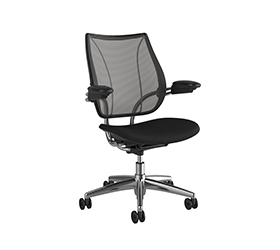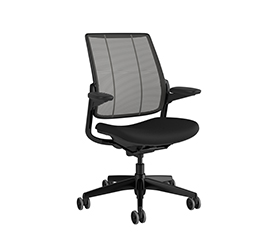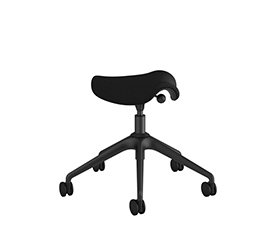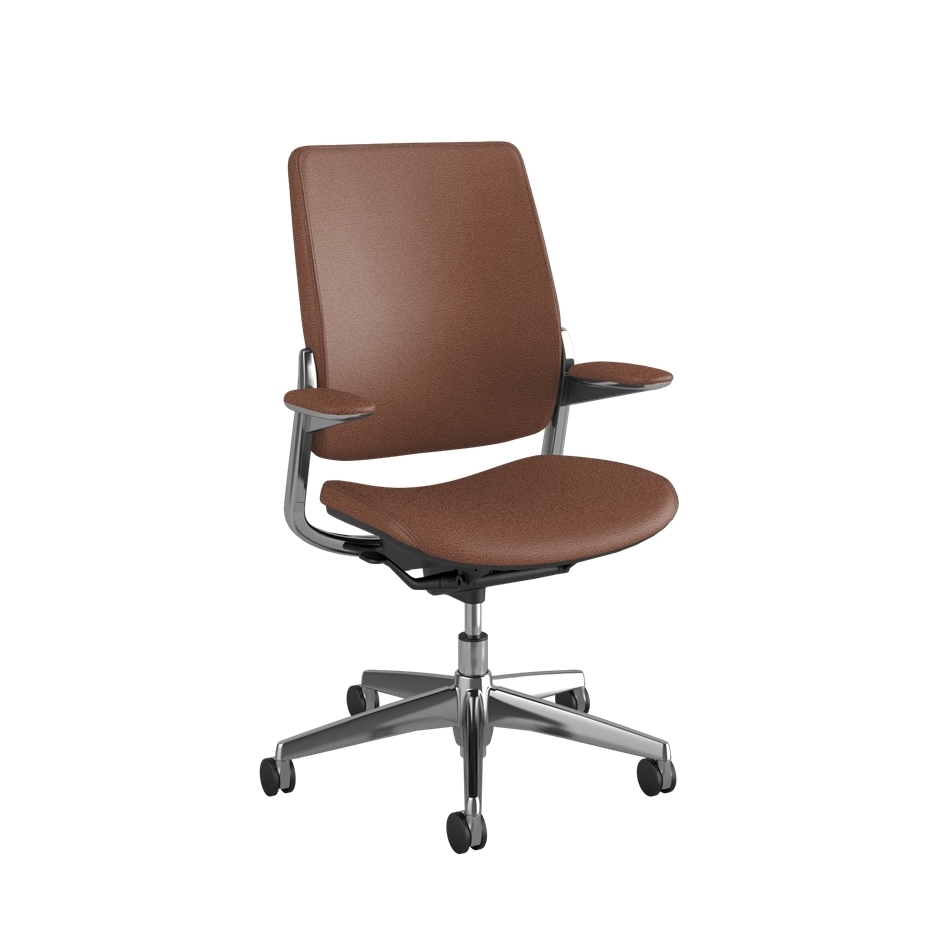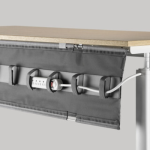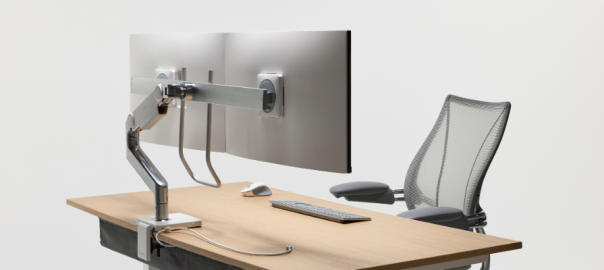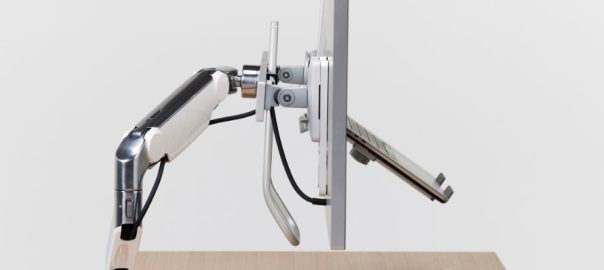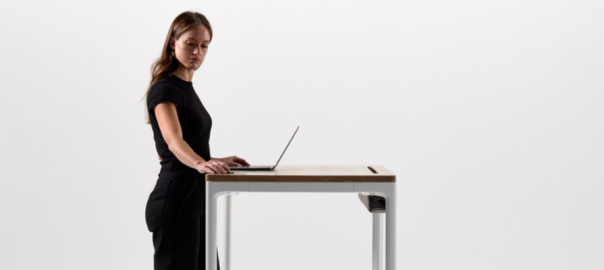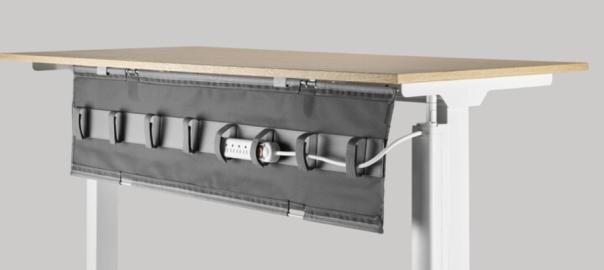Do you often hear others asking you to sit straight? This is because, unknowingly, we often sit in a slumped posture. That slight rounding of the shoulders and forward tilt of the head can indicate a hunchback posture, known medically as kyphosis.
Hunched posture is more than just a concern; it can lead to discomfort, pain, and long-term health issues. However, you can enhance your overall well-being by understanding the reasons for poor posture and implementing effective strategies.
Whether you spend long hours at a desk, engage in physical activities, or want to feel better in your body, adopting healthy habits can make a significant difference. And in this guide, we’ll explore practical techniques to prevent hunchback position. Read along!
Understanding Hunchback Posture (Kyphosis)
Kyphosis, often referred to as hunchback posture, is where the upper back curves excessively forward. This abnormal rounding can affect people of all ages, but it is particularly prevalent during adolescence. While it may seem like a cosmetic issue, kyphosis can lead to discomfort and health problems if not addressed properly.
Diagnosis
Kyphosis or hunchback posture is characterised by an outward curve in the thoracic region of the spine, which can give the appearance of slouching or hunching. Although your spine naturally has curves, an exaggerated curve can create tension in your back muscles and discomfort over time. If you notice a noticeable rounding in your upper back, it’s essential to take action.
Types
Understanding the different types of kyphosis is crucial in identifying your condition and determining the best approach for treatment. Here’s a brief overview:
- Postural Kyphosis: Often stemming from poor posture, especially in adolescents, this type can improve with lifestyle changes and posture correction.
- Scheuermann’s Kyphosis: This form results from wedge-shaped vertebrae and can be painful, often requiring medical intervention.
- Congenital Kyphosis: Present at birth, this type results from improper spine development and may necessitate surgical correction in childhood.
- Cervical Kyphosis: This affects the cervical spine and may require targeted therapy.
- Hyperkyphosis: Severe cases of kyphosis, where the curve exceeds 50 degrees, can lead to significant discomfort and may require surgery.
Common Causes of Kyphosis
Kyphosis, or hunched posture, can stem from various factors that affect the spine’s alignment and strength. Why should one not sit with a hunched back? Prolonged poor posture, like slouching, can weaken the muscles supporting the spine, leading to this condition. Other factors, such as degenerative diseases, spinal injuries, or congenital issues, can also contribute to kyphosis.
Understanding these causes can help you take actionable steps to address and manage the condition. Let’s explore the key causes of kyphosis and their implications, and how to get rid of hunchback to maintain proper spinal health.
Poor Posture
One of the most prevalent causes of kyphosis is poor posture. If you often find yourself in a hunched position—like slouching while sitting at your desk or leaning back in your chair—this can stretch and weaken the muscles and ligaments supporting your spine.
Over time, this misalignment leads to an exaggerated curvature, making your back appear rounded. Maintaining proper desk posture and avoiding prolonged periods of sitting with a hunched back is crucial for preventing this condition.
Osteoporosis
Another significant factor contributing to hunched position is osteoporosis. This condition weakens your bones, making them more susceptible to fractures, particularly in the vertebrae. When these fractures occur, the vertebrae can collapse, leading to a pronounced outward curve in the spine.
If you’re at risk for osteoporosis—especially if you’re older or have certain health conditions—it’s essential to prioritise bone health. Regular check-ups, a balanced diet good in calcium and vitamin D, and weight-bearing exercises can help mitigate these risks.
Abnormally Shaped Vertebrae
Hunchback posture can also develop due to abnormally shaped vertebrae. Conditions like Scheuermann’s disease can cause the vertebrae to grow in a wedge shape rather than the usual rectangular shape.
When this occurs, the alignment of your spine can be significantly affected, leading to a hunched posture. If you suspect your vertebrae might be misshaped, consult a healthcare expert for assessment and potential intervention.
Fractures
Fractures, especially those related to trauma or conditions like osteoporosis, can lead to hunched position as well. Compression fractures result when weakened vertebrae fail to support your body’s weight, causing them to collapse.
This shift alters the spine’s natural alignment and exacerbates the curvature. If you experience back pain or suspect an injury, seek medical attention promptly to avoid long-term complications.
Age-related Changes
As you age, your body undergoes various changes that can affect your spine, particularly through disk degeneration. The intervertebral discs between your vertebrae lose hydration and height over time, leading to a shift in alignment and potentially contributing to kyphosis. Regular exercise, proper nutrition, and ergonomic adjustments in your home office setup can help maintain spinal health as you age.
Other Medical Conditions
Various medical conditions can contribute to hunchback posture. Neuromuscular disorders, connective tissue disorders, or diseases like tuberculosis can weaken the muscles and ligaments that support your spine. If you have a chronic condition, consult a healthcare provider to discuss how it may affect your spinal health.
Ergonomic Hazards
Finally, it’s important to consider ergonomic hazards in your daily environment. Using the best ergonomic office chair or incorporating ergonomic furniture into your home office setup can help maintain a healthy posture. If you spend long hours working at a desk, invest in a chair for back pain relief and practise good posture to reduce the risk of developing kyphosis.
Read More: Effect of Poor Posture
Effective Ways to Prevent Hunchback Posture
Hunchback posture can result in a range of discomforts, including back pain, neck strain, and fatigue. Fortunately, preventing this condition is often about simple adjustments in your daily routine. Here are some effective strategies to maintain a strong, healthy posture.
Invest in Ergonomic Chairs
A quality ergonomic chair maintains comfort and productivity throughout your workday. The right chair supports your posture, reduces strain, and promotes healthy movement. Here are a few type of office chairs that can make a significant difference in your workspace:
- Freedom Task Chair: This chair features an innovative recline mechanism that offers constant support and a pivoting backrest that automatically adjusts to your spine’s needs. It is exceptionally comfortable, with sculpted cushions designed to mimic your body’s natural contours, decreasing pressure point loads.
- Diffrient Smart: Designed by Niels Diffrient, this chair is the “gold standard in office seating” (The New York Times). Its form-sensing mesh automatically adapts lumbar support to your unique body shape, providing targeted comfort without requiring manual adjustments. The chair’s minimal mesh design and U-shaped back offer style and functionality, making it a striking addition to any office.
- Liberty Ocean: This chair takes the cutting-edge design of the Liberty chair and enhances its sustainability by incorporating nearly 0.9 kg (2 lbs.) of recycled fishing nets into its construction. Liberty Ocean features self-adjusting lumbar support and a form-sensing mesh back, providing a custom ergonomic fit without knobs or levers. Its self-adjusting recline offers instant back support at any angle, making it suitable for users of various sizes.
Prioritise Good Posture Throughout the Day
Maintaining good posture needs to be a conscious effort throughout your daily activities. Here’s how to do it:
- Stand Tall: Keep your shoulders relaxed and back, with your chin parallel to the ground. Make sure your ears align with your shoulders.
- Sit Right: When seated, sit up straight with your back against the chair. Your feet should be flat on the floor, knees at or below hip level. Avoid crossing your legs.
- Drive Smart: Adjust your car seat to ensure your back is straight and your arms are comfortably at your sides.
Strengthen Your Core and Upper Back
A strong core supports the spine and maintains good posture. Incorporate these exercises into your routine:
- Plank: Hold the plank position for at least 20–30 seconds to engage your core. Gradually increase your hold time as you get stronger.
- Chin Tucks: Stand up straight, then tuck your chin slightly without tilting your head down. Hold for a few seconds and repeat.
- Push-ups: Regular push-ups strengthen your upper back and shoulders, which support better posture.
- Superman Exercise: Lie face down with your arms extended in front of you. Try to lift your arms, chest, and legs (simultaneously) off the ground, engaging your back and glute muscles. Hold for a few seconds before lowering. This strengthens the lower back and improves posture.
- Bridges: Lie on your back with your feet on the ground and knees bent. Now, try lifting your hips toward the ceiling while squeezing your glutes. Hold for a few seconds before lowering. Bridges strengthen the glutes and lower back, contributing to core stability.
Invest in Ergonomic Products
Ergonomic furniture can significantly impact your posture. Consider these options for your minimal desk setup:
- Foot Rockers: These innovative devices promote movement and comfort by encouraging a gentle rocking motion of the feet. This simple action engages the lower leg muscles, improving circulation and alleviating the discomfort from prolonged sitting.
- Monarch Mat: This product complements the Foot Rockers perfectly by providing a comfortable surface to stand on. The mat encourages movement and reduces fatigue, allowing you to stay active throughout the day, especially if you stand for long periods.
- Laptop Holders: Laptop computers are convenient but often lead to poor posture, commonly called “laptop hunch.” Using a laptop holder helps position the monitor at an ergonomic height, allowing you to maintain a neutral posture. This setup encourages using an external keyboard, enhancing comfort during extended use.
Stretch Regularly
Stretching keeps your muscles flexible and helps counteract the effects of poor posture or standing for long periods. Incorporate these stretches:
- Child’s Pose: Start on all fours, then sit back on your heels while trying to reach your arms forward. Hold for a few breaths to stretch your back.
- Chest Stretch: Stand tall and clasp your hands behind your back. Gently pull your shoulders back and down to open your chest.
- Neck Stretch: Sit or stand up straight. Tilt your head to one side and bring your ear toward your shoulder. Hold this stretch for around 30 seconds and switch sides to stretch your neck muscles.
- Shoulder Rolls: Stand with your arms relaxed at your sides and slowly start rolling your shoulders forward in a circular motion. Then switch to rolling them backwards. This stretch eases the tension in the shoulders and upper back.
- Standing Forward Bend: Stand with your feet at hip-width apart. Hinge at your hips and bend forward, allowing your arms to hang toward the floor. Hold for around 30 seconds to stretch your hamstrings and lower back.
- Hip Flexor Stretch: Put one foot forward into a lunge position while keeping your back leg straight. Then, gently push your hips forward and feel a stretch in the front of your hip. Hold for 15-30 seconds, then switch legs.
Maintain a Balanced Diet
Nutrition plays an essential role in maintaining healthy bones and muscles. Here are some dietary tips:
- Calcium and Vitamin D: Ensure you consume enough calcium and vitamin D to strengthen bone health.
- Protein Intake: Adults should aim for 55 to 65 grams of protein daily to support muscle strength and repair.
- Healthy Fats: Try to incorporate healthy fats into your diet, including avocados, olive oil nuts and seeds. These fats are important for hormone production and help reduce inflammation.
- Hydration: Drink plenty of water throughout the day to stay hydrated. Proper hydration is very important for muscle function and can help prevent fatigue.
- Limit Processed Foods: Lower your intake of processed foods that are high in added sugars, fats, and sodium. These can result in weight gain and negatively impact your overall health.
Be Mindful of Stress and Relaxation
Stress often leads to muscle tension and poor posture. Practice mindfulness techniques to manage stress:
- Deep Breathing: Take a few moments daily to focus on your breath, releasing tension in your shoulders and neck.
- Mindfulness Practices: Techniques like meditation or yoga can help you become more aware of your body and encourage relaxation.
Seek Professional Guidance
If you struggle with maintaining good posture, try consulting a healthcare professional. They can provide proper advice tailored to your needs, helping you address any underlying issues contributing to poor posture.
Conclusion
Understanding the causes of hunchback posture is essential for maintaining a healthy spine. Be proactive about your posture, stay informed about bone health, and make ergonomic choices in your workspace. Addressing these factors can majorly reduce your risk of developing or worsening kyphosis. If you have concerns, consult an expert for advice on how to get rid of hunchbacks and improve your spinal health.


